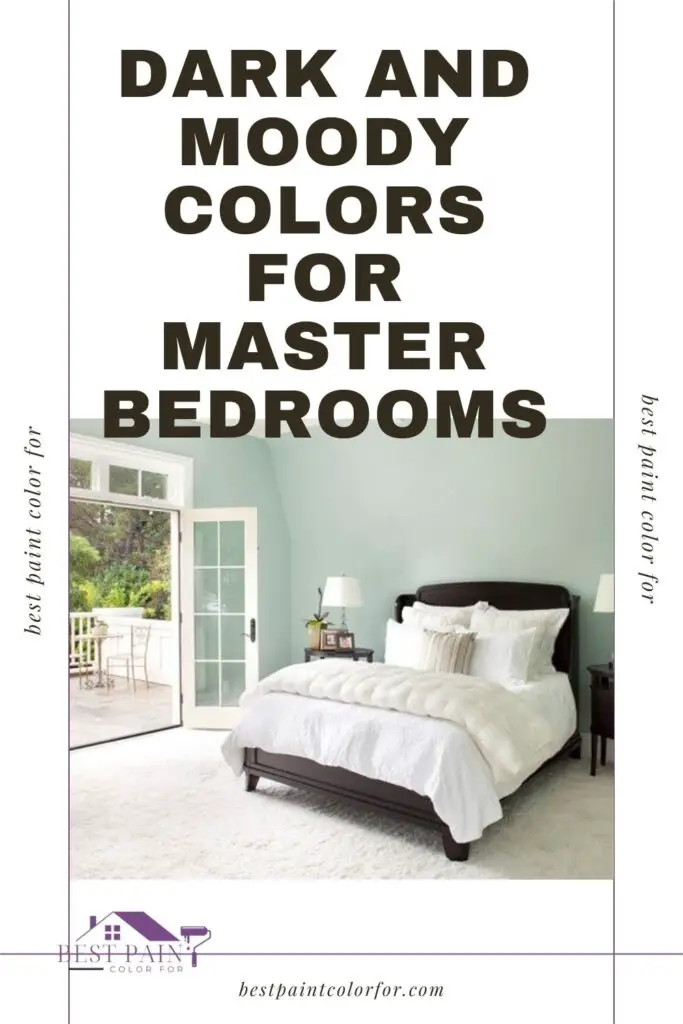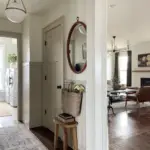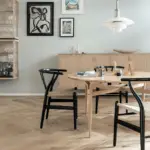Dixie Medium Paper Plates, 8.5 Inch, 90 Count, 2X Stronger*, Microwave-Safe, Soak-Proof, Cut Resistant, Disposable Plates For Everyday Breakfast, Lunch, & Dinner Meals
$5.99 (as of 16 June 2025 09:53 GMT +01:00 - More infoProduct prices and availability are accurate as of the date/time indicated and are subject to change. Any price and availability information displayed on [relevant Amazon Site(s), as applicable] at the time of purchase will apply to the purchase of this product.)20 Pack Vacuum Storage Bags, Space Saver Bags (4 Jumbo/4 Large/4 Medium/4 Small/4 Roll) Compression for Comforters and Blankets, Sealer Clothes Storage, Hand Pump Included
$24.99 (as of 17 June 2025 10:10 GMT +01:00 - More infoProduct prices and availability are accurate as of the date/time indicated and are subject to change. Any price and availability information displayed on [relevant Amazon Site(s), as applicable] at the time of purchase will apply to the purchase of this product.)Are you wondering which Colour is sage green? Or Is sage Mint green? Well, Sage green has gained significant popularity as a fashionable color in recent times. As part of our ongoing Paint Color Project, we aim to provide you with comprehensive insights into the enchanting world of sage green.
Sage green, in essence, is a gentle and subdued shade of green that can exhibit either warm or cool undertones. Its versatility lies in its capacity to seamlessly blend into various décor schemes and fashion choices, thanks to the subtle gray nuances that imbue it with a soft and muted appearance.
- What color is Sage Green?
- Is sage warm or cool?
- What 3 colors make sage green?
- Light vs. Dark Sage Green Paint Colors
- Best Light Sage Green Paint Colors
- Best Dark Sage Green Paint Colors
- Warm vs. Cool Toned Sage Green
- Mint Green vs. Sage Green
- Olive Green vs. Sage Green
- The Best Sage Green Paint Colors by Leading Brands
- Sage Green Paint Colors for Every Room
- Harmonizing Colors with Sage Green
- Beyond Paint: Sage Green Accessories
- Is sage green a pretty color?
- 10+ Best sage green for tranquil bedrooms

What color is Sage Green?
So, what color sage green is?
Sage Green can be described as a delightful and inviting hue, evoking a sense of coziness and comfort. Whether you lean towards the refreshing coolness of mint or prefer the warmth of olive, you’ll discover the ideal shade of sage green to resonate with your personal style.
Sage green, a captivating hue that effortlessly blends elements of green and gray, presents a world of possibilities in interior design. Whether you’re aiming for a warm and cozy ambiance or a cooler, more refreshing feel, sage green has a diverse range of shades to offer.

Pro Grade Paint Roller Kit, Brush & Roller for Professionals & Homeowners
Perfect for smooth finishes on your interior walls. Ideal for home improvement enthusiasts!
Buy Now on Amazon- Sage green Hex: #B2AC88
- The sage green hex code is #B2AC88, and its RGB values are R: 178, G: 172, B: 136.
Is sage warm or cool?
Sage green, a captivating hue, exhibits a spectrum of temperatures, with variations leaning towards both warmth and coolness.
The nuances within sage green colors are achieved through the careful inclusion of various colorants, including blue, gray, black, oxide yellow, and even traces of red or orange.
The composition and balance of these colorants play a crucial role in determining whether a particular sage green shade falls on the warm or cool side of the color spectrum.
Let’s delve deeper into the temperature aspects of sage green:

Rust-Oleum 367605 Home Interior Floor Coating Kit, Semi-Gloss Black
Ideal for updating outdated flooring at a fraction of the cost of replacement and adheres without stripping, sanding or priming.
Buy Now on AmazonFactors Influencing Sage Green’s Temperature:
Blue and Gray: Sage greens with a higher proportion of blue and gray tend to lean towards cooler tones. These shades exude a sense of freshness and tranquility, making them well-suited for creating serene and calming environments.
Oxide Yellow: In contrast, sage greens enriched with oxide yellow exhibit warmth. The infusion of this colorant imparts a cozy and inviting quality to the hue, making it ideal for spaces where a touch of comfort is desired.
Black, Red, or Orange Accents: Occasionally, hints of black, red, or orange are introduced into sage green formulations. These accents can further influence the warmth or coolness of the color, adding unique character to the shade.
Applications of Warm and Cool Sage Greens:
Cool Sage Green: Cool-toned sage greens are often chosen for spaces where relaxation and serenity are paramount. Consider using them in bedrooms, bathrooms, or living rooms to create a soothing atmosphere. They also work well as wall colors in kitchens, offering a refreshing backdrop to culinary activities.
Warm Sage Green: Warm sage greens with hints of oxide yellow are ideal for infusing warmth and comfort into a room. They can be excellent choices for cozy living areas, dining rooms, or home offices, where a welcoming ambiance is desired.

What 3 colors make sage green?
Luckily, there are multiple methods to craft your perfect shade of sage green, whether for your painting project or to grace your living room walls. In this guide, we will explore the intricate art of making sage green paint from scratch, using primary colors, and blending from various shades of green.
💡Pro tip:
Sage green, a captivating hue that effortlessly blends elements of green and gray, presents a world of possibilities in interior design.
Yellow, Blue, and Gray
Basic Green Foundation: Commence by blending 2 parts yellow paint with 1 part blue. These fundamental colors form the basis of your sage green journey.
Renowned artist Kelly Medford recommends employing a “primary palette” approach, encompassing both warm and cool variations of primary colors along with white to expand your color spectrum.
Mix these colors thoroughly until they seamlessly meld into a vibrant, classic green. For sage green, a slightly heavier dose of yellow is preferred.
- Brightening with Yellow: To infuse vibrancy into your basic green, introduce 3 parts yellow paint, matching the quantity of green you initially created. Blend these hues meticulously, employing circular motions with your brush or palette knife, until they harmoniously evolve into a vivid grassy green. You may use a precise measuring tool, such as 1 tablespoon (15 mL), to ensure the proportions are impeccably balanced.
- Introducing the Neutral Gray: Create a separate mixture by combining 3 parts white with 1 part black. The proportions here should align with those used to fashion your grass green. This fusion results in a neutral, medium-light gray shade. Utilize a pristine brush or knife, devoid of any residual green, blue, or yellow paint, for this step. To achieve a subdued sage, consider darkening the gray by starting with a 1:1 ratio of white to black.
- The Sage Green Emergence: Stir the grass green and gray blends together, merging them to craft sage green paint. You can utilize the entire quantity of both gray and green to achieve a standard sage shade, or take a more incremental approach by introducing small amounts of gray until your desired sage green hue materializes. Keep in mind that while you can always add more paint, removing excess is not an option.
- Fine-Tuning Sage Green: If you wish to further refine your sage green shade, consider making slight adjustments using small quantities of white, black, or gray. For a lighter sage, incorporate white paint; for a darker tone, add a minuscule amount of black. To attain a more subdued and contemplative sage, increase the gray, or infuse liveliness with additional grass green.
Light vs. Dark Sage Green Paint Colors
When envisioning the mood of your living space, you’ll instinctively lean towards either light or dark wall colors. This distinction forms the foundation of our exploration into the best sage green paint colors.
Best Light Sage Green Paint Colors
For those inclined towards a brighter and airier atmosphere, light sage green paint colors are the way to go. These shades infuse your space with a sense of tranquility and openness.

Best Dark Sage Green Paint Colors
Conversely, if you seek a cozier and more intimate ambiance, consider the depth and richness of dark sage green paint colors. These shades exude sophistication and create a snug environment.
Warm vs. Cool Toned Sage Green
The subtle interplay of green and gray in sage green can yield either warm or cool undertones, influencing the overall mood of your space.
Mint Green vs. Sage Green
If you find yourself torn between cool and warm shades of green, our comparison of mint green vs. sage green will provide clarity. You’ll discern the distinctive cool tones of mint green and the warmth that sage green brings.
Olive Green vs. Sage Green
For those contemplating between a warm sage green and a neutral, true-green shade, explore our comparison of forest green vs. sage green. It will help you make an informed choice to suit your preferences.
The Best Sage Green Paint Colors by Leading Brands
Renowned paint brands offer a myriad of sage green options, each with its unique character and charm. Here, we delve into the top selections from some of the most popular brands:
- Sherwin Williams Sage Green Paint Colors
- Benjamin Moore Sage Green Paint Colors
- Behr Sage Green Paint Colors
Sage Green Paint Colors for Every Room
Sage green isn’t limited to a specific room; it’s a versatile choice that suits various applications, from interior spaces to exteriors and even kitchen cabinets. Explore our recommendations for the best sage green paint colors for each area of your home:
- Sage Green Bedroom Paint Colors
- Sage Green Cabinet Paint Colors
- Sage Green Exterior Paint Colors
- Sage Green Kitchen Cabinet Paint Colors
Also Read: The 15 best sage green paint colors for 2023
Harmonizing Colors with Sage Green
Pairing colors with sage green can enhance its appeal. Discover the ideal complementary and contrasting shades to make your sage green space truly pop:
What color goes with sage green?
Sage green effortlessly pairs with an array of colors, offering endless possibilities for your design. When seeking colors that harmonize with sage green, consider the following options:
- Blue: The calming and tranquil qualities of blue beautifully complement sage green. Consider shades like Sherwin Williams Naval or Benjamin Moore New York State of Mind for a harmonious blend.
- Green: Sage green’s natural affinity for its own hue creates a serene and cohesive look. Explore complementary shades within the green spectrum to create a balanced palette.
- Yellow: Infuse energy and warmth into your space by combining sage green with shades of yellow. Benjamin Moore Mustard Seed and Sherwin Williams Macadamia are excellent choices.
- Pink: For an unexpected yet delightful contrast, opt for soft pink tones like Sherwin Williams Smoky Salmon or Behr Pinata. These hues add a touch of vibrancy to your sage green backdrop.
- Gray: Neutral and versatile, gray tones like Benjamin Moore Pale Oak or Sherwin Williams Agreeable Gray can create a sophisticated and understated atmosphere when paired with sage green.
- White: Crisp white tones, such as Benjamin Moore Simply White or Sherwin Williams Extra White, offer a clean and timeless contrast to sage green. The choice between bright white and soft white depends on the warmth of your sage green shade.
- Metallics: To add a touch of glamour and sophistication, consider incorporating metallic accents like gold or silver alongside sage green.
It’s important to note that the vast array of sage green shades, from warm and yellow-toned to cool and minty, can influence the compatibility of accent colors. Always conduct color tests to ensure your chosen palette harmonizes seamlessly with your specific shade of sage green.
Beyond Paint: Sage Green Accessories
If you wish to incorporate sage green into your home without committing to a full paint job, there are plenty of creative options. Add a temporary burst of color with art, textiles, and accessories. Here are some of our favorite sage green home accessories:
- Chunky Knit Blanket
- Velvet Sectional
- Duvet Cover
- Ceramic Lamp
- Kitchen Canisters
- Throw Pillows
- Jute Rug
Embrace the captivating world of sage green and infuse your living spaces with its timeless charm. Whether through paint or accessories, let sage green be your canvas for creating a harmonious and inviting home.
Is sage green a pretty color?
Sage green, with its versatile and captivating charm, finds its place harmoniously in various areas of your home, offering a refreshing and soothing touch to your living spaces. Here are some key areas where homeowners can consider incorporating sage green:
Living Rooms:
Sage green can transform your living room into a serene oasis. Whether used as a wall color, in furniture upholstery, or as accent pieces like throw pillows and curtains, it complements both traditional and contemporary decor styles.
Kitchens
This color has gained popularity in kitchens, where it can be applied to cabinet doors, kitchen islands, or backsplashes. It adds a touch of nature’s freshness to the heart of your home and pairs wonderfully with natural wood accents.
Bedrooms
Sage green is an excellent choice for creating a calming bedroom retreat. It’s ideal for wall colors, bedding, or even as an accent in the form of artwork or bedside lamps. Its gentle hue promotes relaxation and tranquility.
Bathrooms
Transform your bathroom into a spa-like haven with sage green tiles, shower curtains, or towels. It pairs beautifully with whites, grays, and natural materials like marble or bamboo.
Dining Rooms
Sage green can set the tone for a sophisticated dining experience. Consider using it on the walls, in dining chair upholstery, or through tableware and centerpieces.
Home Offices
Create a serene and focused workspace with sage green walls or furniture. Its calming properties can enhance productivity and concentration.
Entryways
Make a welcoming first impression by incorporating sage green into your entryway decor. It pairs well with earthy tones and natural materials, creating a warm and inviting atmosphere for guests.
Outdoor Spaces
Extend the charm of sage green to your outdoor areas with sage-colored outdoor furniture cushions, planters, or even exterior paint for your front door.

10+ Best sage green for tranquil bedrooms
Sage green, revered for its soothing and calming qualities, offers a spectrum of enchanting paint colors that can transform your living spaces into havens of peace.
Here’s a curated list of renowned sage green paint colors known for their ability to infuse tranquility into any room:
- Sherwin Williams Eider White: This soft sage green boasts a delicate balance of gray undertones, creating a gentle and timeless aura in any space.
- Benjamin Moore Silver Sage: With a hint of gray, this elegant sage green exudes sophistication and serenity, making it a perfect choice for bedrooms and living rooms.
- Behr Ultra Pure White: A crisp sage green with a touch of coolness, perfect for creating a refreshing and airy atmosphere in kitchens and bathrooms.
- Valspar Desert Fortress: This muted sage green with warm undertones brings a sense of earthiness and comfort to dining rooms and home offices.
- Farrow & Ball French Gray: A classic sage green with an inherent grace, ideal for traditional interiors, lending a sense of timeless elegance.
- Sherwin Williams Clary Sage: A versatile sage green with subtle hints of gray and blue, offering a serene backdrop for bedrooms and reading nooks.
- Benjamin Moore Palladian Blue: Infused with sage undertones, this soft blue-green hue evokes a coastal, tranquil ambiance in bathrooms and bedrooms.
- Behr Salamander: A deeper, moody sage green that adds a sense of coziness and sophistication to dens and home libraries.
- Valspar Green Waterfall: This light and airy sage green paint color brings a sense of freshness and vitality to entryways and hallways.
- Farrow & Ball Breakfast Room Green: A rich and inviting sage green, perfect for creating an intimate and inviting atmosphere in dining spaces.





















